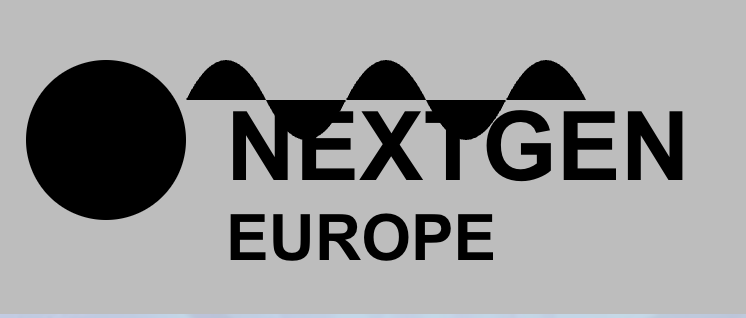The Spanish Grand Prix qualifying session will take place in mid-afternoon in Europe, while it will occur at different times in other regions across the globe.
Qualifying for the Spanish Grand Prix has become more of a thrill for the drivers since the return to the flying final sector when the circuit’s layout was reverted, and here is the F1 start time information you need for it.
Due to their extensive experience in the junior categories and testing in Formula 1 machinery, all the drivers possess an exceptional knowledge of the circuit. As the circuit is renowned for its versatility, it frequently highlights the cars that outshine their competitors throughout a weekend.
What time does Spanish Grand Prix qualifying start?
The Qualifying session for the Spanish Grand Prix is scheduled to commence at 3pm local time on Saturday, June 22, 2024. Here are the corresponding times for various regions across the globe:
United States and Canada*: 7am Pacific Daylight Time, 8am Central Daylight Time, 9am Eastern
Mexico: 7am [Mexico City]
United Kingdom: 2pm
Central European Time**: 3pm
South Africa: 3pm
Gulf Standard Time: 5pm
India: 6.30pm
Indonesia*: 8pm [Western Indonesia Time]
China: 9pm
Singapore: 9pm
Malaysia: 9pm
Philippines: 9pm
Japan: 10pm
Australia*: 11pm [Australian Eastern Standard Time]
New Zealand: 1am [New Zealand Standard Time] [Sunday 23 June]
*Convert to check locally if you do not live in an area of this territory with these time zones.
Includes 30 nations and territories comprising Albania, Andorra, Austria, Belgium, Bosnia and Herzegovina, Croatia, Czechia, Denmark, France, Germany, Hungary, Italy, Kosovo, Liechtenstein, Luxembourg, Malta, Monaco, Montenegro, Netherlands, North Macedonia, Norway, Poland, San Marino, Serbia, Slovakia, Slovenia, Spain (excluding the Canary Islands), Sweden, Switzerland, and Vatican City.
How to watch the Spanish Grand Prix on TV
Formula 1 fans across the globe will have the opportunity to watch the races through a variety of broadcasting rights deals. Different nations and territories have secured their own agreements, allowing fans to enjoy the races either through pay TV or free-to-air platforms. Here is a selection of countries where F1 enthusiasts can tune in to catch all the action.
Africa: SuperSport
Australia: Fox Sports, Foxtel, Kayo
Brazil: BandSports, TV Bandeirantes
Canada: RDS (French), TSN (English), Noovo
Central Asia: Setanta Sports
China: CCTV
France: Canal+
Germany: Sky Sport F1
India: FanCode
Italy: Sky Sport F1, TV8
Japan: DAZN, Fuji TV
Latin America (except Argentina and Mexico): ESPN
Malaysia: beIN Sports
Mexico: Fox Sports
Middle East and North Africa: beIN Sports
Netherlands: Viaplay
New Zealand: Sky Sport, Prime (highlights)
Pakistan: A Sports
Republic of Ireland: Sky Sports F1, Channel 4 UK (highlights)
South Korea: Coupang
Spain: DAZN
United Kingdom: Sky Sports F1, Channel 4 (highlights)
United States: ESPN+, ESPN Deportes
Don’t miss any Formula 1 action this season with PlanetF1.com
F1 2024: Where to buy, how to watch, cheapest ticket prices and best package deals
Follow PlanetF1.com’s WhatsApp channel for all the F1 breaking news!
Spanish Grand Prix qualifying live stream: How to watch online
In the UK, F1 enthusiasts can conveniently stream the Spanish Grand Prix online via platforms like NOW and Sky Go.
F1 TV Pro can be accessed globally in specific regions, providing unique offerings such as onboard cameras showcasing all 20 cars, pre and post-race programs, and numerous additional features.
F1 TV Pro can be streamed live on Apple TV, Chromecast Generation 2 and newer, Android TV, Google TV, Amazon Fire TV, and Roku devices, offering uninterrupted viewing experience and commentary in six languages.
Here is a list of all the territories where F1 TV Pro is available.
What is the F1 qualifying format used and how does it work?
F1 qualifying is divided into three sessions lasting an hour in total, employing a knockout system to establish the grid. This format, which has gained immense popularity since its inception, has been widely embraced in the sport.
Q1: 18 minutes
At the conclusion of this period, five drivers are removed, determining positions 16 to 20 on the grid. During the 18-minute stint, drivers have the freedom to complete as many timed laps as they desire.
Q2: 15 minutes
Following an eight-minute pause, the remaining 15 cars resume for another session. Subsequently, five more cars withdraw at the conclusion of Q2, establishing positions 11-15 on the grid. The regulations remain unchanged, permitting drivers to complete timed laps at their discretion within a 15-minute timeframe.
Q3: 12 minutes
Following a seven-minute interval, the last 10 cars resurface on the track to compete in the shootout for pole position. Once the final 12-minute session concludes, the top 10 spots on the grid are determined for the Grand Prix.
For a full look at the intricacies and other rules around F1 qualifying, here is a full breakdown of the current format.
Read next: F1 start time: What time does the Spanish Grand Prix start? How to watch and live stream
